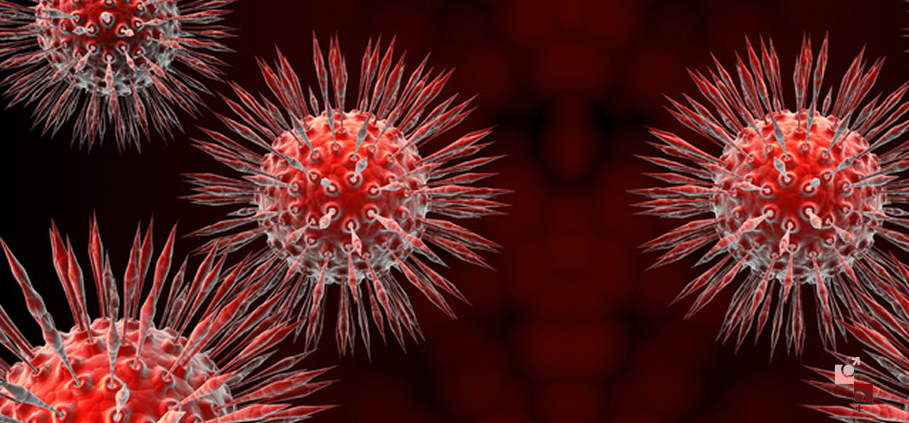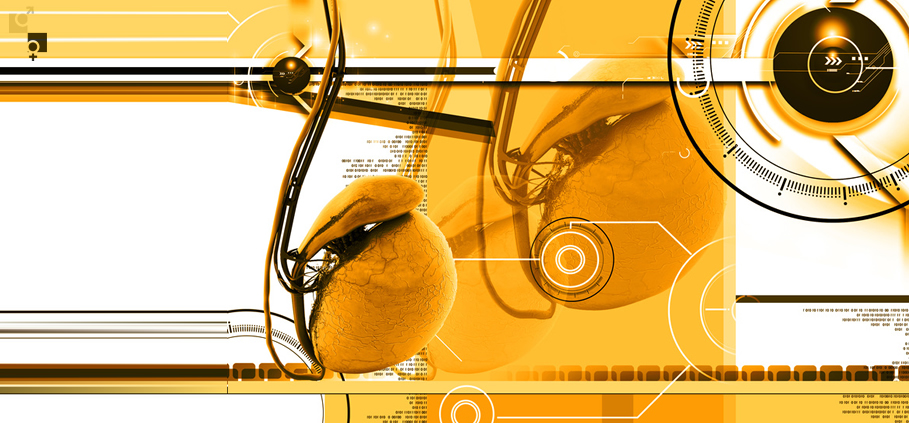Testicle Diseases
- •Testicular Cancer
- •Cryptorhidism
- •Hydrocele
- •Varicocele
- •Spermatocele
- •Scrotocele (Bubonocele)
- •Testicular Torsion
- •Viral Testitis
- •Bacterial Testitis
- •Epididymites
- •Fournier Disease (Fulminating gangrene of the scrotum)
Testicular Cancer
Testicular cancer is a relative rare cancer, affecting only 2% of male population and has one of the highest cure rates of urinal cancer, with 90% viability if diagnosed in its early stages. Unfortunately, in relation to other age groups, it “prefers” adolescents and young males of 15-34 years and is the 3rd in ranking cause of death in these ages. The cause – pathogen of testicular cancer is virtually unknown. There are many factors which could be incriminated and associated with testicular cancer, such as traumas, repeated infections, administration of estrogens during pregnancy etc., further to cryptorhidism, which is the only confirmed cause for the development of testicular cancer. In most cases there is a hard lump in or on the testis, which is usually painless and can be accompanied by a (reactive) hydrocele (collection of fluid around the testis). Immediate surgical treatment is necessary. video
Cryptorhidism
It is the condition when the testicle is not located in its regular position within the cavity of the scrotum, but in some other place of its normal descent from the kidney to the respective semi-scrotum. Anatomical, functional and hormonal disorders have been proposed at times as possible causes of the incomplete descent of the testicles. The absence of the testicle from the scrotum (the sac or pouch that contains the testes) can be easily identified during the clinical examination of the patient. The treatment is mainly surgical and the appropriate age recommended for the operation is the age of 2 years, since the early treatment of cryptorchidism is considered to be restricting the complications which ectopic testicles may present.
Hydrocele
Hydrocele is the collection of fluid between the petals of the tunica albuginea of the testicle (pre-formed fibrous capsule covering the testes), which results in a, usually painless, swelling of the scrotum. In many cases the etiological factor cannot be identified, therefore it is an idiopathic hydrocele, while there are cases when the collection of fluid is a reactive manifestation of some testicular disease, in which case it is a secondary hydrocele (possibly existing testicular cancer). It requires surgical treatment. video
Varicocele
It is the varicose dilatation of the veins of the spermatic cord which results in the formation of a soft mass above the testicle (this is the stagnation of blood around the testis and is caused by the failing or insufficient function of some of the valves along the internal spermatic vein). Varicocele is usually asymptomatic unless it is very large, in which case the patient may experience pain or burden in the testis. Varicocele usually affects people of young age and requires surgical treatment. video
Spermatocele
It is a small, soft cyst which contains accumulated fluid (mostly sperm) on the upper and rear part of the testis and is treated surgically. video
Scrotocele/Scrotal Hernia (Bubonocele)
It occurs to men and protrudes through the internal inguinal ring, the point where the testis descends and reaches its final position in the scrotum. In some cases, the creation of scrotal hernia is the result of an anatomical abnormality and the failure of embryonic closure of the internal inguinal ring, or of a rupture of the inguinal ring upon great physical distress (lifting heavy weights, constipation, cough etc.). Treatment must be immediate and the restoration of the damage is achieved with surgical operation.
Testicular Torsion
It is the contortion of the spermatic tone, the area which the nerves and veins ending to the testis go through (rotation of the testis around its axis). It is usually observed with children and adolescents of up to 18 years of age, it can, however, occur at older ages too. The symptoms are intense: pain, swelling of the testicle, as well as redness of the scrotum. Testicular torsion is a surgical emergency that needs immediate intervention. Severe implications of this condition are the loss (death) of the testicle and sterility. Immediate surgical treatment is required. video
Viral Testitis
Testicular inflammation which is usually an implication of another condition (chicken pox, parotitis, flu etc.) The symptoms are pain, swelling of the testis, redness in the scrotum, high fever. The condition is treated with administration of medication.
Bacterial Testitis
Testicular inflammation. It is usually caused by sexually transmitted bacteria (colobacteria, pseudomonas), anatomical or neurological abnormalities of the urogenital system. The condition is treated with administration of medication.
Epididymitis
It is an inflammation of the epididymis, an organ located near the testicle, and which is where the spermatozoa mature. The symptoms are sharp and acute pain, swelling in the testicle, fever, difficulty in urination. It is usually caused by sexually transmitted bacteria (colobacteria, pseudomonas), anatomical or neurological abnormalities of the urogenital system.
Fournier Disease (Fulminating gangrene of the scrotum)
It is an acute infection and occurs in the external male genitalia. It is usually observed in people of old age and patients with Diabetes Mellitus or with medical history of a urinary disease.
The symptomatology of this condition is severe:
- -Swelling of the scrotal and penis area
- -Shiver
- -Fever
- -Pain
- -Occurrence of areas of black color (necroses)
Urgent and immediate treatment is required.



